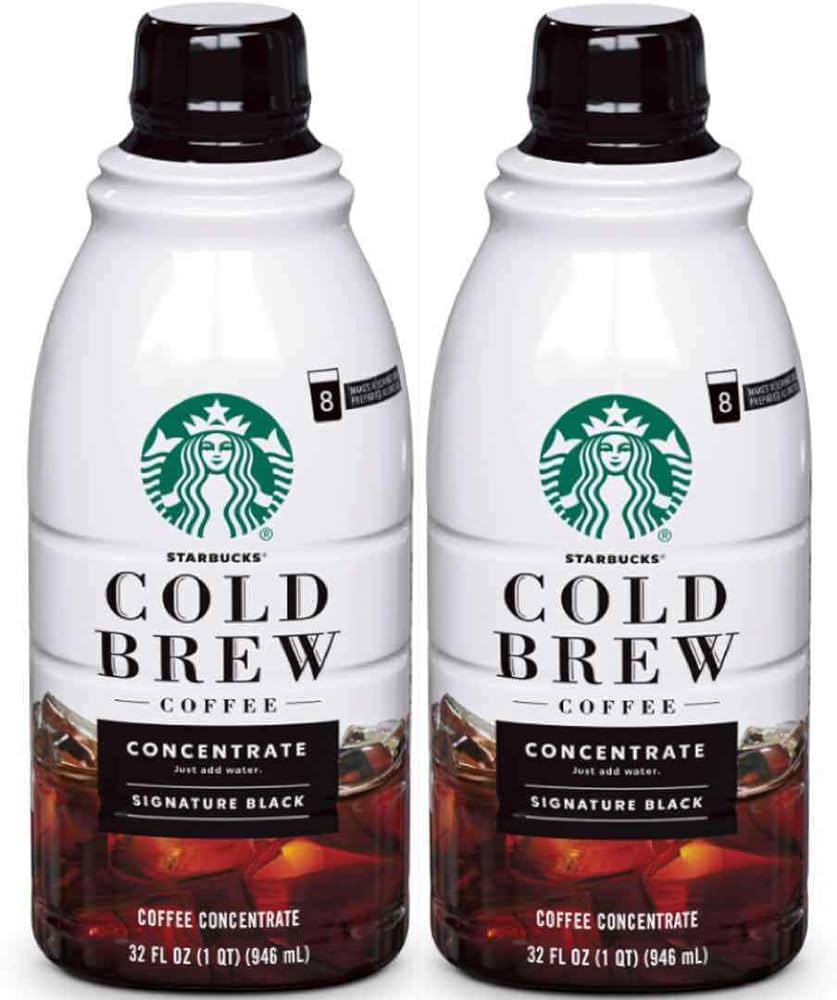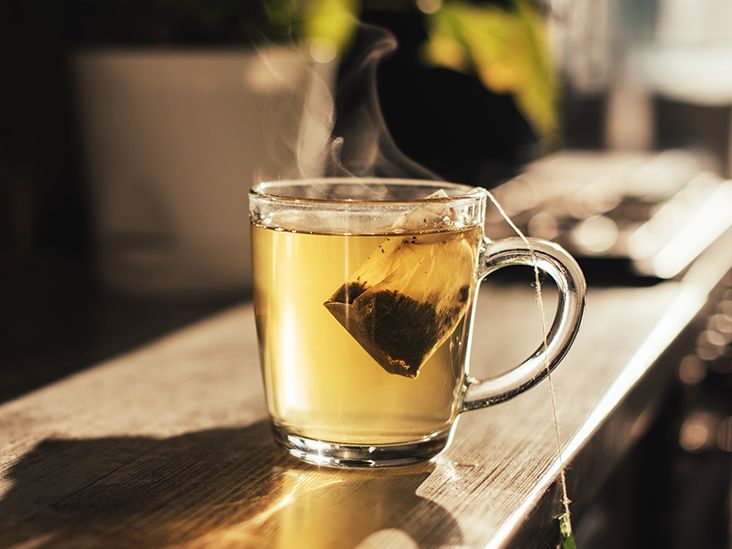Have you ever wondered if you can use a cold brew maker for brewing herbal tea? If so, you’re not alone. Many tea enthusiasts are looking for convenient and efficient ways to steep their favorite herbal blends. In this article, we will explore the possibility of using a cold brew maker for brewing herbal tea and discuss the potential benefits it may offer. So, grab a cup of your favorite tea and let’s find out if your cold brew maker can be your new go-to for herbal tea brewing.
What is a cold brew maker?
A cold brew maker is a specialized device or system designed to make cold brew beverages, including herbal tea. It is a popular alternative to traditional hot brewing methods, as it offers a unique flavor profile and a smoother, less acidic taste. Cold brew makers typically consist of a brewing vessel, often made of glass or food-grade plastic, and a built-in filtration system to separate the liquid from the tea leaves or herbs.
How does a cold brew maker work?
Explanation of the brewing process
The cold brew process involves steeping tea leaves or herbs in cold or room temperature water for an extended period, typically between 12 to 24 hours. This slow extraction method allows for a gradual release of flavors and aromas, resulting in a more concentrated and balanced taste. The brewing vessel of a cold brew maker is designed to hold water and the tea leaves or herbs, allowing for optimal infusion without the need for heat.
Key components of a cold brew maker
A typical cold brew maker consists of several key components. The brewing vessel, usually made of glass or BPA-free plastic, holds the water and the tea leaves or herbs during the steeping process. It may have a large capacity to make multiple servings or a smaller size for single servings. The built-in filtration system, which can be a removable mesh filter or a fine-mesh strainer, separates the brewed tea from the leaves or herbs, ensuring a smooth and sediment-free cup of tea. Some cold brew makers also feature airtight lids or pour spouts for convenient storage and serving.
Benefits of using a cold brew maker for herbal tea
Retains more flavor and aroma
Cold brewing herbal tea with a cold brew maker helps to preserve the natural flavors and aroma of the tea leaves or herbs. Unlike hot brewing methods that may extract bitter and astringent compounds, cold brewing allows for a milder and more balanced taste experience. The slow infusion process captures the delicate nuances of the herbs, resulting in a more vibrant and aromatic cup of tea.
Reduces bitterness
Cold brew makers are particularly effective in reducing the bitterness often associated with certain herbal teas. The low temperature and extended steeping time of the cold brew method discourage the release of tannins and other bitter components found in some tea varieties. This results in a smoother and less astringent brew, allowing you to enjoy the natural flavors of the herbs without the unpleasant bitterness.
Produces a smoother and less acidic tea
Another advantage of using a cold brew maker for herbal tea is the reduction in acidity. Traditional hot brewing methods can extract acids from the tea leaves or herbs, leading to a tangy or sour taste. Cold brewing, on the other hand, yields a beverage with a lower acidity level, making it gentler on the stomach and more suitable for individuals with digestive sensitivities. The resulting tea is often described as smooth and refreshing, with a subtle sweetness that enhances the overall flavor profile.
Types of herbal tea suitable for cold brewing
List of popular herbal teas for cold brewing
Numerous herbal teas are well-suited for the cold brewing method. Some of the most popular options include chamomile, peppermint, hibiscus, lavender, and lemon balm. These herbs offer a range of flavors, from floral and soothing to bright and invigorating. Other herbal teas that can be cold brewed include lemongrass, ginger, rosehip, and various fruit-infused blends.
Characteristics of each tea variety
Each herbal tea variety comes with its own unique characteristics when cold brewed. Chamomile, for example, is known for its mellow and calming properties, making it a popular choice for relaxation purposes. Peppermint, on the other hand, offers a refreshing and invigorating taste, perfect for hot summer days. Hibiscus provides a tart and fruity flavor, while lavender adds a floral and soothing note to your tea. It’s all about experimenting and finding the combinations that suit your taste preferences.
Steps to cold brew herbal tea using a cold brew maker
Preparation of the tea leaves or herbs
Start by selecting high-quality loose-leaf herbal tea or fresh herbs. If using loose-leaf tea, measure the desired amount based on your taste preferences and the instructions provided by the tea seller. If using fresh herbs, rinse them under cold water to remove any dirt or impurities. Roughly chop the herbs to help release their flavors during the brewing process.
Water-to-tea ratio
The water-to-tea ratio is crucial in achieving the right concentration of flavors. It’s generally recommended to use about 1 to 2 tablespoons of tea leaves or fresh herbs for every 8 ounces of water. Adjust the ratio according to your personal preference, stronger or weaker.
Brewing time and temperature
Unlike hot brewing, which requires specific water temperatures, cold brewing is much more forgiving. Simply fill your cold brew maker with cold or room temperature water and add the tea leaves or herbs. Secure the lid or cover and let it steep for at least 12 hours, and up to 24 hours, in the refrigerator or at room temperature. The longer you steep, the more concentrated the flavor will be, and the stronger the tea will become.
Straining and storing the brewed tea
Once you’ve achieved your desired brewing time, carefully remove the tea leaves or herbs from the cold brew maker. Most cold brew makers come with a built-in filtration system, making this step effortless. If not, you can strain the brewed tea using a fine-mesh sieve or cheesecloth. Transfer the strained tea into a separate container or store it directly in the cold brew maker for convenient storage. Cold brewed herbal tea can typically be stored in the refrigerator for up to 5 days.
Features to consider in a cold brew maker for herbal tea
Material and size of the brewing vessel
When choosing a cold brew maker for herbal tea, consider the material and size of the brewing vessel. Glass is often preferred due to its non-reactive nature and ability to maintain the integrity of the flavors. BPA-free plastic is a suitable alternative, especially for those looking for a lightweight and portable option. Consider the size of the brewing vessel based on your consumption needs and storage space.
Built-in filtration system
A cold brew maker with a built-in filtration system offers convenience and efficiency. Look for a model with a fine-mesh filter or a removable infuser basket that effectively separates the tea leaves or herbs from the brewed tea. This eliminates the need for additional straining equipment and makes the cleanup process quick and easy.
Ease of cleaning and maintenance
Choose a cold brew maker that is easy to clean and maintain. Dishwasher-safe components or ones that can be easily rinsed and wiped clean prevent the buildup of stubborn tea stains. Opt for a design that disassembles for effortless cleaning and make sure to follow the manufacturer’s instructions for maintenance to prolong the lifespan of your cold brew maker.
Alternative methods for brewing herbal tea
Hot brewing
While cold brewing is the recommended method for herbal teas, hot brewing can still be an option for certain varieties. To hot brew herbal tea, heat water to the appropriate temperature for the specific tea type, which can range from 170°F to 212°F (77°C to 100°C). Add the tea leaves or herbs to a tea infuser or tea bag and steep for the recommended time, usually between 3 to 5 minutes. Remove the leaves or herbs and enjoy your hot cup of herbal tea.
Sun brewing
Sun brewing is a unique method that takes advantage of the sun’s natural heat to extract flavors from the tea leaves or herbs. Fill a glass jar or container with cold water and add your tea leaves or herbs. Seal the jar tightly and place it in direct sunlight for several hours, typically between 2 to 4 hours. The sun’s warmth will slowly steep the tea, infusing it with a gentle and delicate flavor. Once brewed, strain the tea and serve it chilled or over ice.
Flash chilling
For those who prefer a quick and refreshing way to enjoy herbal tea, flash chilling is an excellent option. Start by brewing a concentrated batch of hot tea using the hot brewing method. Once steeping is complete, pour the hot tea over a glass filled with ice cubes. The ice will rapidly cool the tea, resulting in a chilled and flavorful beverage. This method is perfect for those moments when you’re short on time and need a refreshing pick-me-up.
Tips for enhancing the flavor of cold brewed herbal tea
Adding fruits or herbs for infusion
To add an extra burst of flavor to your cold brewed herbal tea, consider infusing it with fruits or additional herbs. Sliced citrus fruits like lemon, lime, or orange can provide a bright and tangy twist. Fresh berries or melon chunks will lend a subtle sweetness to your tea. For herbal notes, try adding sprigs of fresh mint, rosemary, or basil. Experiment with different combinations to discover your favorite infusion.
Experimenting with different steeping times and temperatures
Cold brewing offers the flexibility to experiment with steeping times and temperatures to tailor your tea to your personal taste preferences. If you prefer a stronger brew, increase the steeping time by a few hours. Conversely, if you prefer a milder flavor, decrease the steeping time. You can also play around with the brewing temperature by using room temperature water for a slower extraction or cold water for a more delicate infusion. The beauty of cold brewing is the ability to customize your tea to suit your individual palate.
Frequently asked questions about brewing herbal tea with a cold brew maker
Can I reuse the tea leaves or herbs?
Yes, you can reuse the tea leaves or herbs when cold brewing herbal tea. After straining the brewed tea, simply return the tea leaves or herbs to the cold brew maker and add fresh water. However, note that each subsequent brew will result in a slightly milder flavor profile than the previous one. Experiment with the number of brews that suit your taste preferences before discarding the tea leaves or herbs.
Can I add sweeteners or milk to the cold brewed tea?
Certainly! You can add sweeteners like honey, agave syrup, or stevia to sweeten your cold brewed herbal tea to your liking. Milk or non-dairy alternatives can also be added to create a creamier texture. However, keep in mind that cold brewed herbal tea is known for its naturally smooth and mellow taste, so it is advisable to try the tea without any additional additives first to fully appreciate its flavor.
How long can I store the brewed tea?
Cold brewed herbal tea can typically be stored in the refrigerator for up to 5 days. Make sure to transfer the tea to an airtight container for optimal freshness. However, it’s always best to consume the tea within the first few days to enjoy its peak flavor and quality.
Can I heat the cold brewed tea?
Yes, if you prefer to enjoy your cold brewed herbal tea warm, you can heat it gently on the stovetop or in the microwave. However, keep in mind that heating the tea may alter its flavor profile, potentially making it slightly weaker or less vibrant than when consumed cold. Experiment with different heating methods to find the one that best suits your taste preferences.
Conclusion
Using a cold brew maker for herbal tea offers several advantages, including the retention of flavors and aromas, the reduction of bitterness, and the production of a smoother and less acidic brew. By following the steps outlined in this article, you can easily prepare your own cold brewed herbal tea at home. Consider the materials, size, and filtration system of a cold brew maker when making your purchase, and don’t hesitate to try alternative brewing methods or experiment with different flavors and steeping times. So go ahead, give cold brewing a try, and discover the refreshing and flavorful experience of cold brewed herbal tea. Cheers!




